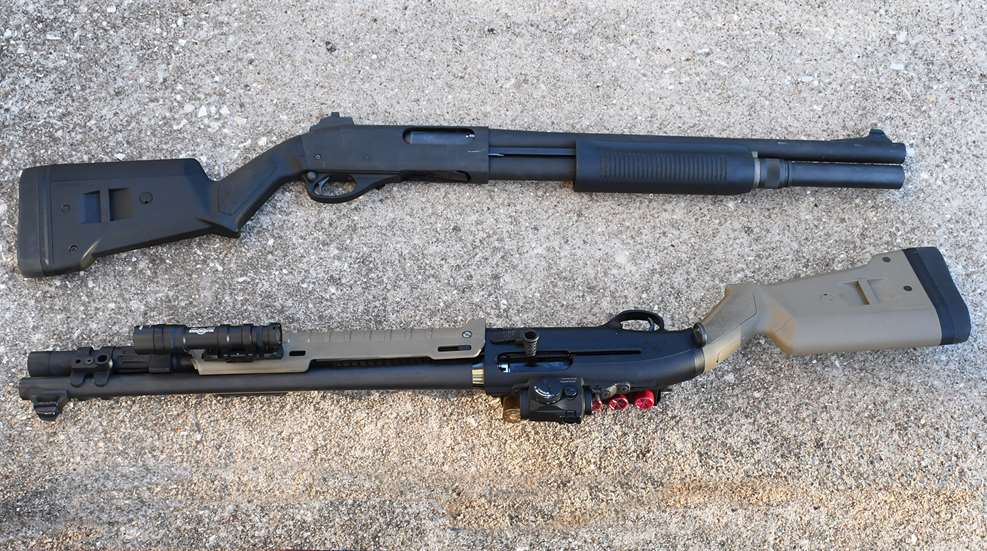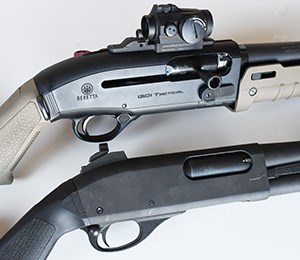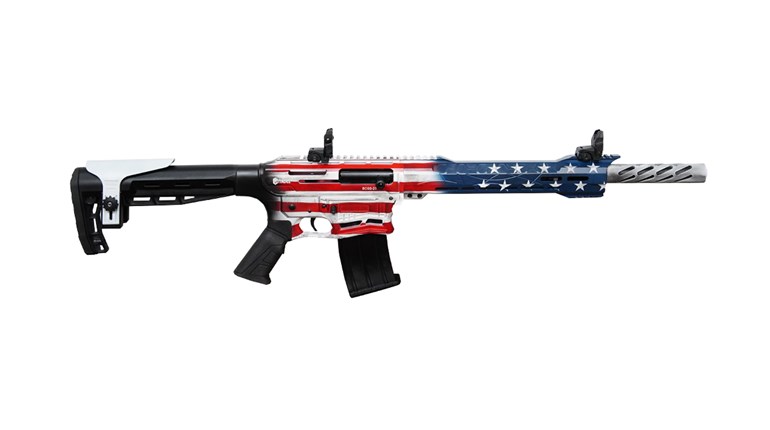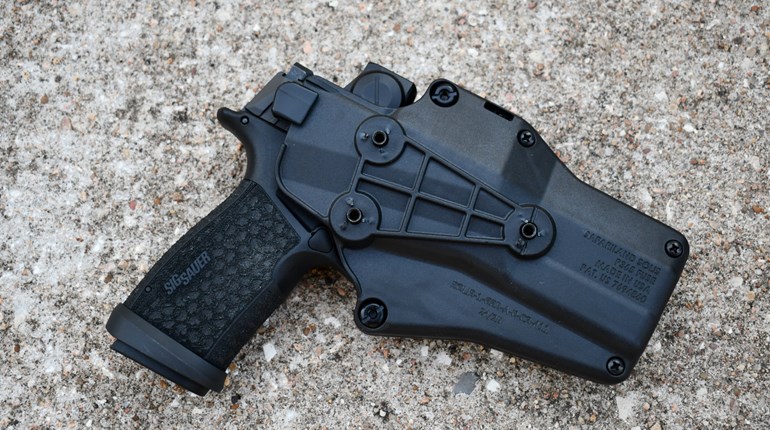
The fundamental difference between a pump-action shotgun and a semi-automatic shotgun is that one loads itself and the other does not. Although both were invented in the 19th century, historically speaking the pump-action became the king of shotguns because they were more practical. For most of the 20th century, the simplicity, lower costs and straightforward manual-of-arms ensured the pump-action shotgun’s dominance over its semi-automatic rivals. However, for about the last 30 or so years, semi-automatic shotguns have been evolving to the point where they are mechanically as reliable, if not more so, than pump guns. Today’s inertia and gas driven semi-automatic mechanisms are mature and have proven themselves across every shotgun related application, from sport and hunting to defense. So this begs the question, is the manually operated pump-action shotgun technically obsolete in 2023?
Let’s Get Technical
 Technically speaking, I would not hesitate to claim that a modern semi-automatic shotgun design with a gas system like Beretta’s Blink action renders any pump-action shotgun obsolete. While modern inertia operated shotguns are also extremely reliable, I think gas systems best them even if by a slight edge, but this is another discussion. With modern semi-auto shotguns, besides the fact that the shooter never has to worry about cycling the action, these gas guns cycle extremely quickly. In the hands of a trained shooter, these shotguns can be used to great effect and can throw a heavy payload downrange in a couple seconds. In some ways, a modern semi-automatic shotgun can also be more durable and resilient than a pump shotgun. According to Tim Chandler, an instructor with 360 Performance Shooting, a properly set up Beretta 1301 semi-automatic shotgun can outlast a Remington 870 pump-action shotgun when it comes to putting tens of thousands of shotshells through each gun. He has the benefit of seeing scores of students that show up to his shotgun classes with both semi-auto and pump shotguns. The semi-automatic Beretta only needs periodic spring replacements, but unfortunately the 870’s manual linkage will start wearing and straining from the intensity and tension paramount to proper pump-action shotgun technique.
Technically speaking, I would not hesitate to claim that a modern semi-automatic shotgun design with a gas system like Beretta’s Blink action renders any pump-action shotgun obsolete. While modern inertia operated shotguns are also extremely reliable, I think gas systems best them even if by a slight edge, but this is another discussion. With modern semi-auto shotguns, besides the fact that the shooter never has to worry about cycling the action, these gas guns cycle extremely quickly. In the hands of a trained shooter, these shotguns can be used to great effect and can throw a heavy payload downrange in a couple seconds. In some ways, a modern semi-automatic shotgun can also be more durable and resilient than a pump shotgun. According to Tim Chandler, an instructor with 360 Performance Shooting, a properly set up Beretta 1301 semi-automatic shotgun can outlast a Remington 870 pump-action shotgun when it comes to putting tens of thousands of shotshells through each gun. He has the benefit of seeing scores of students that show up to his shotgun classes with both semi-auto and pump shotguns. The semi-automatic Beretta only needs periodic spring replacements, but unfortunately the 870’s manual linkage will start wearing and straining from the intensity and tension paramount to proper pump-action shotgun technique.
Having a shotgun that loads itself means that the shooter can keep their focus on their target and the surrounding environment. As long as the shotgun is mounted securely, it also means that they don’t really need to worry about taking shots from odd angles and abnormal positions either. Having a reliable semi-automatic shotgun also means the risk of “short-stroking” the shotgun is virtually non-existent. A nice side benefit is that modern semi-auto shotguns add a degree of end-user shooting comfort by virtue of the operating system absorbing some of the felt recoil. Lastly, the lack of a sliding fore-end presents tactically oriented shooters the chance to easily mount tactical lights, cables and other useful accessories.
The Reality of Life With A Semi-Automatic Shotgun
Succeeding with a semi-automatic shotgun isn’t as cut-and-dried as described above. True proficiency with semi-automatic shotgun operation comes with a very high upfront cost. Not only are these guns twice or three times more expensive than most pump-action shotguns, but proficiency with on is going to require more time, attention, practice and repetition. Categorically, semi-automatic shotguns tend to have a more complex manual-of-arms involving peripherals like buttons and latches to activate, magazine-tube cut-offs or releasing the action. These can easily be fumbled and missed by shooters who aren’t accustomed to them. During a critical situation, this could potentially result in a negative outcome. The first time I shot my 1301, I accidentally “pumped” the fore-end, from habit. Even though semi-auto shotguns cancel out short-stroking, Chandler has seen rare instances when even the “good” semi-autos have jammed from user error such as the shotgun not being held properly when fired.
Where The Pump-Action Shotgun Shines
The biggest benefits associated with pump-action shotguns are their simplicity and affordability. On a dollar-basis, the pump-action shotgun is probably the most powerful defensive firearm money can buy. Pump-action shotguns don’t have magazine tube cut-offs nor do they have any extra buttons or latches–other than their safeties and action releases. Like the semi-auto, pump-action proficiency still requires shooter investment, but the buy-in is not as costly as that of the semi-automatics. Frankly, the manual of arms is more easily learned and retained, even if not practiced for long periods of time. The pump’s lack of magazine cut-off means that the action works exactly the same way every time it is manipulated.






































